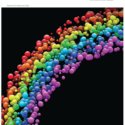
The below is an extract taken from the August edition of the Surface Coatings International (SCI) Journal.
To read more please click here
By Ann-Marie Etherington & Laura Merritt
OCCA has long been a member of the Science Council, a membership organisation for professional bodies and learned societies across science, bringing together a range of disciplines and sectors to reflect the multi-disciplinary practice of science in today’s society. On 7th May, the Science Council’s Event Managers Network held an online meeting to discuss issues relating to holding virtual conferences and events. At this time, OCCA had already postponed its AGM, cancelled its seminars and rescheduled the Surfex exhibition for 20-21 October 2020.
The hot topic of conversation was which online platforms were people testing and using to deliver their societies activities. Amongst the platforms being used by participants of the meeting were Zoom, GoToWebinar and Livestorm. The preferred choice for an event depended how the strengths and weaknesses of a platform met the needs of the event, for example, would voting be required? Was there a need for interactive questions and answers, downloadable content, live and recorded sessions? One clear message was that no one could sit for an entire day ‘attending’ a full day online conference. Some success was gained by separating presentations and discussions and limiting to 1.5-hour sessions mixed with interactive sessions.
One of the societies represented had already held a virtual AGM and their experience is being reviewed by OCCA council. The selection of a suitable platform to allow voting, presenting of information, viewing of documentation and affording the opportunity to ask questions was successfully met. This certainly provides OCCA with a possible solution to holding an AGM this year in a safe manner. All the societies rely on event activities to raise funds. Discounts for online conferences were considered a good solution to encouraging attendance, since money was saved by not hiring venues. Free taster sessions were also being considered to entice attendees, with the opportunity to pay to download recorded webinars and review at a convenient time. ‘Free’ events were a great way to attract new members, provided that the events did not cause long-term damage to future income streams.
Conference dinners could also be held online, using delivery services to supply dinner and beverages. Would society members be interested in seeing their industry colleagues eat dinner? No one seemed convinced. However, trials of online OCCA quiz nights with a favourite beverage have proven to be successful and plans are being rolled out to include all members.
A number of difficulties in attending online events were highlighted in the meeting including company security blocking websites and Apps, poor access to broadband and even insufficient bandwidth perhaps due to competition with home schooling. The necessity of a Host, Moderator and IT Support for Online sessions were deemed essential for the smooth running of online sessions. Also, it was recommended that attendance should be ‘by invite’ only, ensuring events were not wrecked by malicious people.
There are plans to hold a follow-up Event Managers Network meeting to share experiences, successes and failures when more virtual events have been held. OCCA has successfully held several online Council meetings, social networking events, quiz nights and weekly webinars. There are further plans to move our seminars to online webinars and hold our first virtual AGM, to be combined with a social event. We have been truly inspired by our Science Council colleagues.


